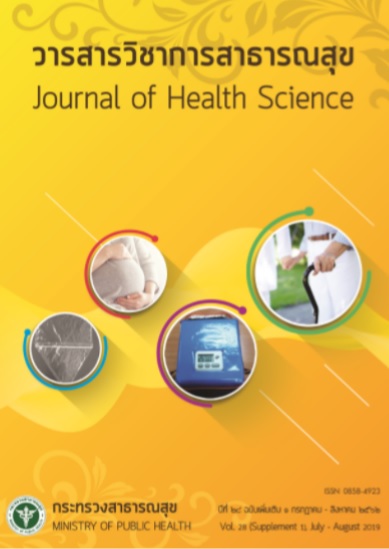Developing Health Promotion Model for the Youths in Kho-Libong Sub-district, Kantang District, Trang Province
Keywords:
health promotion, appreciation influence control (AIC), youthAbstract
This action research aimed to study on community context and developing the youth’s health promotion model living in Kho-Libong, Kantang District, Trang Province. The study applied the technique of appreciate - influence - control (AIC) to set various activities for youth. The samples of the study consisted of (1) 40 young people, and (2) 30 stakeholders in the community, e.g. agents of sub-district administrative organization, teachers, community leaders, health volunteers, public health officers, and family leaders. They were selected by purposive sampling method. The research was conducted in 3 stages: planning, action, observation and reflection. The period of study was 2 years - during November B.E. 2557–2559. Data analysis was done by method of content analysis, interpretation, and creation of summary data. The results illustrated that Koh-Libong context, Kantang District, Trang Province had eight villages with 1,798 households, and a total of population of 7,028, 3,595 males and 3,443 females. There were 13 schools; and the main occupations was fishing. It was found that youth potential in health promotion in the community could be developed through the appreciate - influence - control techniques (AIC) which encouraged collaboration activities between the youth and stakeholders in the community to create various activities. In this study there were 9 projects supporting youth’s health promotion projects and covered on four dimensions e.g. physical, mental, society and intellectual. After-action review revealed that the study process, described as a CIPERC model, could be applicable for promoting health young people in other areas with similar context. It was recommended that appropriate development programs should take into account the social capital such as comminity unity and identity of the area.
Downloads
Downloads
Published
How to Cite
Issue
Section
License
Copyright (c) 2019 Journal of Health Science - วารสารวิชาการสาธารณสุข

This work is licensed under a Creative Commons Attribution-NonCommercial-NoDerivatives 4.0 International License.







